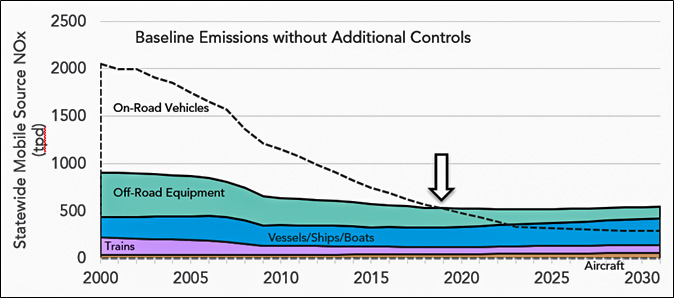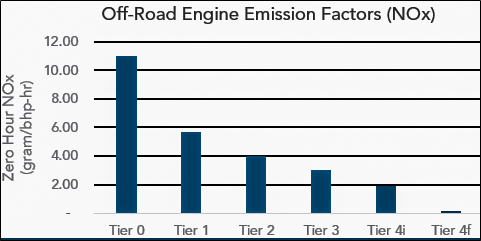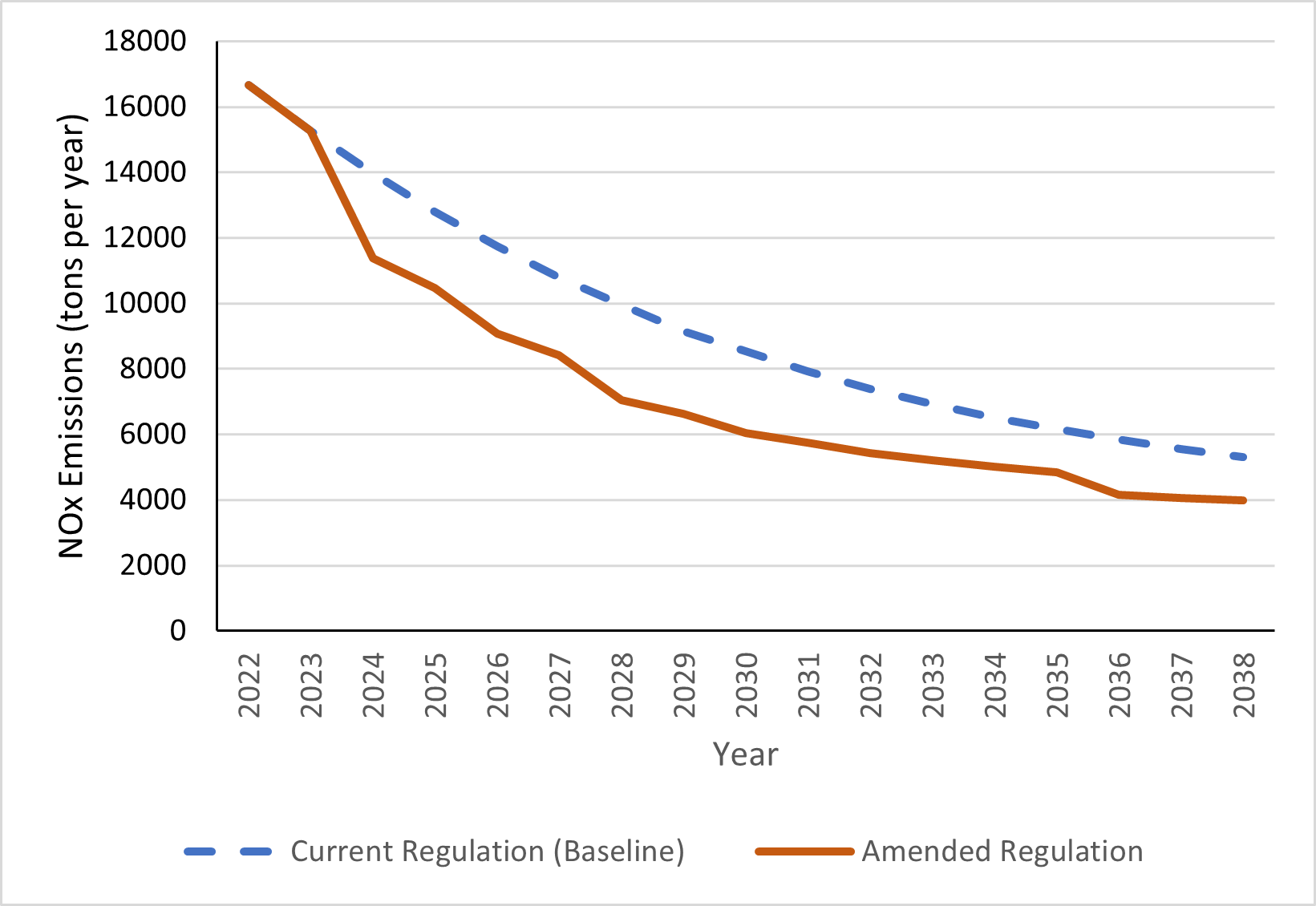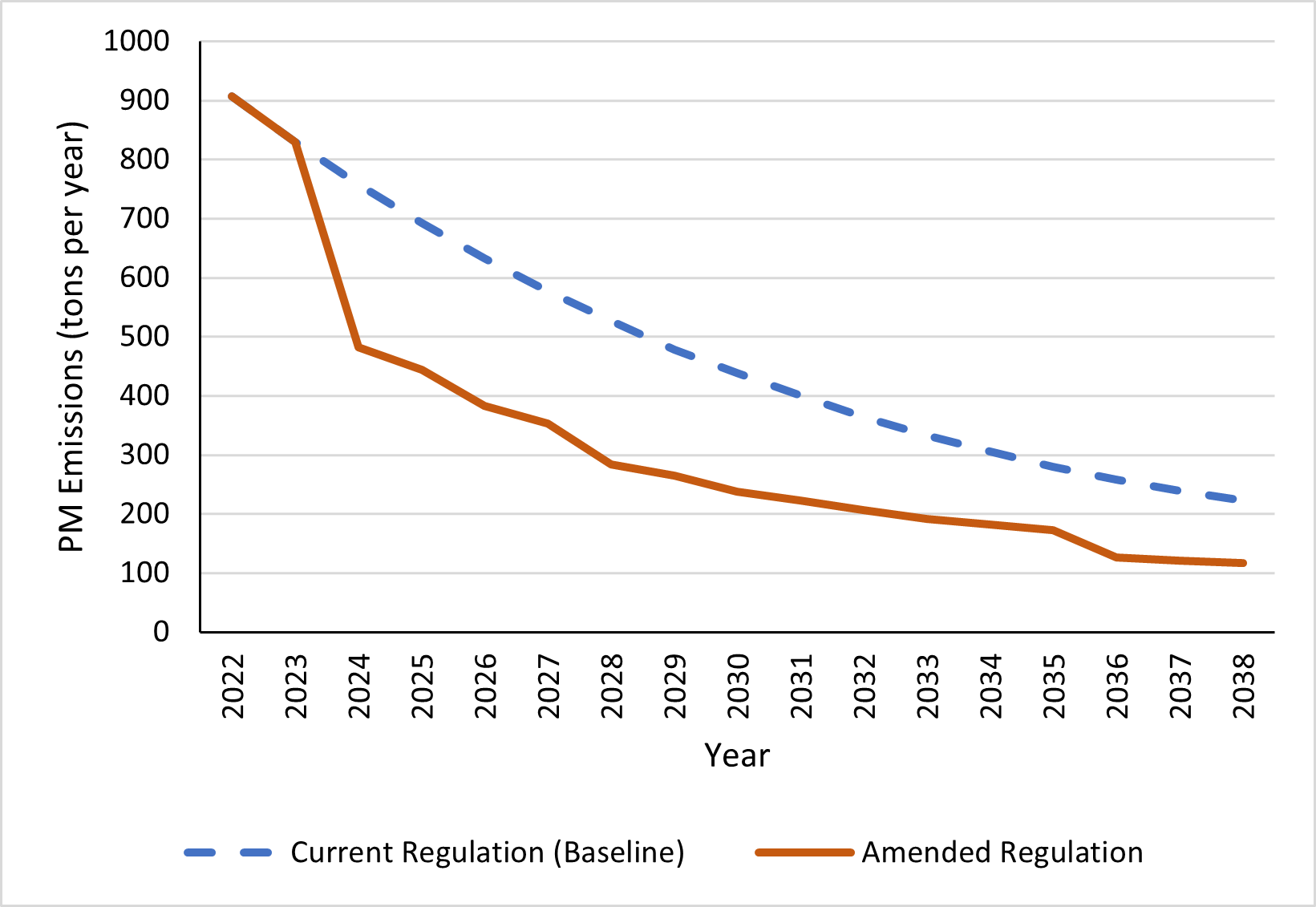
Overview of Amendments to the In‑Use Off‑Road Diesel‑Fueled Fleets Regulation
Contact
Categories
Background
Off‑road heavy‑duty diesel‑powered vehicles are a diverse group, ranging from small skid steer loaders used in residential landscaping to very large mining trucks, and include dozers, forklifts, cranes, and excavators. The California Air Resources Board (CARB) has regulated in‑use off‑road diesel vehicles since 2008 through the In‑Use Off‑Road Diesel‑Fueled Fleets Regulation (Off‑Road Regulation). The Off‑Road Regulation was subsequently amended twice in 2009, and again in 2010. The Off‑Road Regulation requires fleets to reduce their emissions by retiring older vehicles and replacing the retired vehicles with newer vehicles, repowering older engines, or installing verified diesel emission control strategies in older engines; and by restricting the addition of older vehicles to fleets. CARB recently approved additional amendments to the Off-Road Regulation which are effective October 1, 2023, and described in further detail below.
Need for Amending the Regulation
As seen in the figure shown below, the importance of achieving further oxides of nitrogen (NOx) emissions reductions from the off‑road sector, which includes off‑road equipment subject to the Off-Road Regulation, is only getting more critical as the relative share of on‑road NOx emissions continues to decline due to CARB’s robust on‑road regulatory and incentive policies. The arrow in Figure 1 displays the point at which the emissions from the combined off‑road sector exceed those of on‑road vehicles.

Off‑road diesel vehicles also emit diesel particulate matter (PM) which has been identified as a toxic air contaminant by CARB and poses a significant public health risk, especially at the local level. Action is needed to reduce diesel PM at a statewide level to reduce the health risk throughout California, especially in communities that experience disproportionate burdens from exposure to toxic air contaminants.
Emission standards for new engines have become progressively cleaner and are divided into increasingly stringent levels (Tiers), starting with Tier 1. Although the population of older vehicles is relatively small - Tiers 0 (or uncontrolled), 1, and 2 only make up one third of the statewide fleet reported to CARB - this small population contributes 60 percent of the NOx and PM emissions in 2022. A single, older Tier 0 off‑road engine has up to 80 times higher emissions per hour compared to a new Tier 4 Final engine. Figure 2 displays the zero‑hour NOx emission factor for engines with a horsepower of 100‑175.

Elements of the Amendments
- Phase out of the oldest and highest‑emitting off‑road engines from operation in California. The chart below outlines the year, on January 1 of that year, in which the tier phase‑out requirements would begin for each fleet size:
Year (January 1) | Large Fleets | Medium Fleets | Small Fleets | Ultra‑Small Fleets |
2024 | Tier 0/MY 1994 or older on‑road |
|
|
|
2026 | Tier 1/MY 1999 or older on‑road | Tier 0/MY 1994 or older on‑road |
|
|
2028 | Tier 2/MY 2003 or older on‑road | Tier 1/MY 1999 or older on‑road | Tier 0/MY 1994 or older on‑road | Tier 0/MY 1994 or older on‑road |
2030 |
| Tier 2/MY 2003 or older on‑road | Tier 1/MY 1999 or older on‑road | Tier 1/MY 1999 or older on‑road |
2032 |
|
| Tier 2/MY 2003 or older on‑road |
|
2036 |
|
|
| Tier 2/MY 2003 or older on‑road |
- Restrict the addition of vehicles with Tier 3 and 4i engines, which is an expansion of provisions of the Off-Road Regulation that restrict the vehicle‑engine Tier that can be added to a fleet:
Year (January 1) | Large Fleets | Medium Fleets | Small Fleets | Ultra‑Small Fleets |
|---|---|---|---|---|
2024 | Tier 3 | Tier 3 | Tier 3 | Tier 3 |
2028 |
|
| Tier 4i/MY 2006 or older on‑road |
|
2035 |
|
|
| Tier 4i/MY 2006 or older on‑road |
- Starting January 1, 2024, require contracting entities to obtain and retain a fleet’s valid Certificate of Reported Compliance prior to awarding a contract or hiring a fleet;
- Starting January 1, 2024, mandate the use of R99 or R100 Renewable Diesel for all fleets, with some limited exceptions;
- Provide voluntary compliance flexibility options for fleets that adopt zero‑emission technology; and
- Include additional requirements to increase enforceability, provide clarity, and provide additional flexibility for permanent low‑use vehicles.
Benefits of the Amendments
- The Amendments are estimated to reduce statewide emissions from off‑road diesel‑fueled vehicles by approximately 31,000 tons of NOx and 2,700 tons of PM beyond the reductions expected from the baseline between 2024‑2038.
- The following charts compare the estimated NOx and PM emissions under the baseline and the Amendments and show the year‑by‑year estimated emissions reductions achieved via the Amendments.


- The Amendments are expected to provide additional emissions reductions and associated improvements to air quality that will help protect all communities and would benefit environmental justice communities located in areas with increased exposure to air pollution and toxics from in‑use off‑road diesel vehicles.
- Avoids an estimated 570 premature deaths, 82 hospital admissions for cardiovascular illnesses, 98 hospital admissions for respiratory illnesses, 277 emergency room visits, and provides an estimated $5.7 billion in benefits versus $1.9 billion in net costs.
Is Funding Available?
Funding programs are available that offer incentives for cleaner and advanced technology for in‑use off‑road diesel‑fueled vehicles, as well as supporting electric charging or alternative fueling infrastructure. Note that many of these programs are competitive, and some fund a variety of projects other than off‑road diesel equipment. For more information about additional funding opportunities, visit CARB Incentive Programs.
More Information
- The rulemaking documents can be found at: https://ww2.arb.ca.gov/rulemaking/2022/off-roaddiesel
- For general information about the Off-Road Regulation and to access all reporting forms, visit The Off-Road Zone at www.arb.ca.gov/offroadzone.
